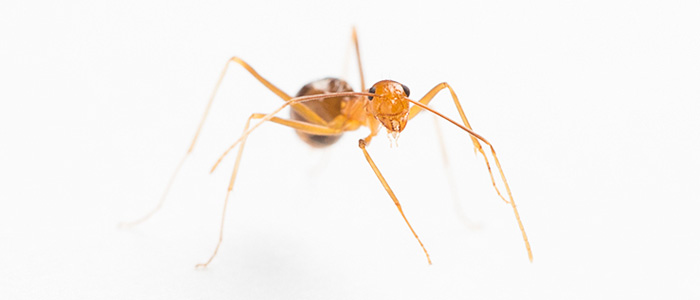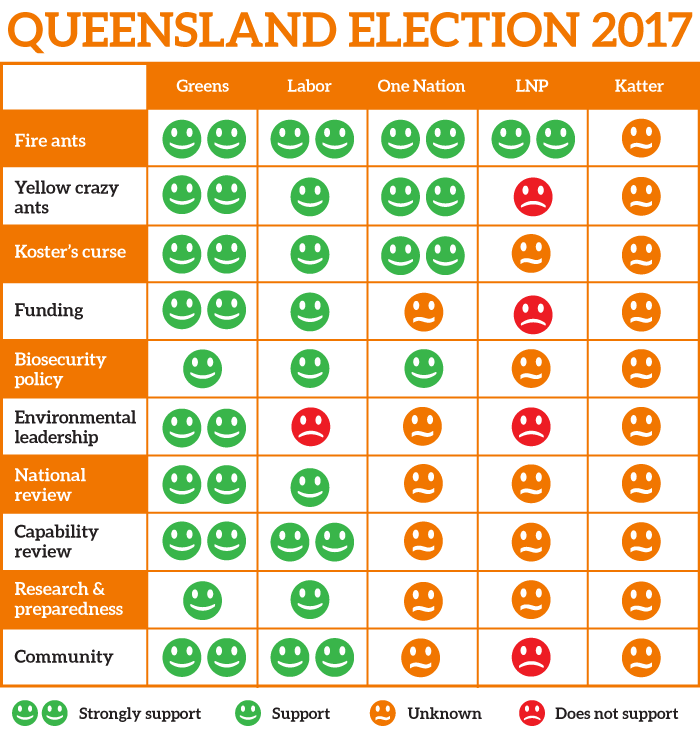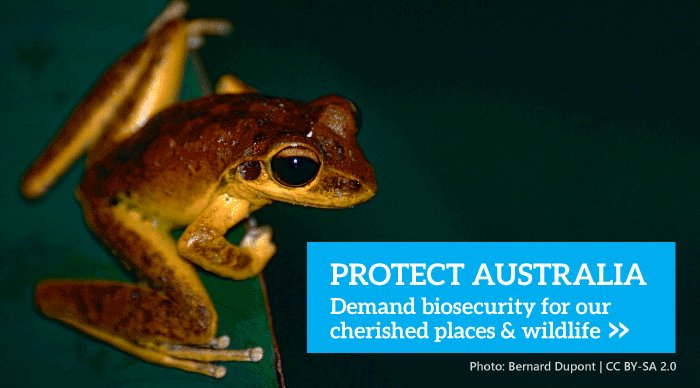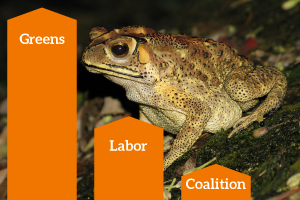
Along with land clearing, invasive species are the major threat to wildlife in Queensland. Yet biosecurity has been missing from Queensland election headlines.
We’ll rectify this by giving you our Queensland election guide.
High stakes
Queensland is ground zero in the battle to keep Australia free of harmful new invaders.
At stake are not only the iconic wet topics rainforests and the Great Barrier Reef but possibly all wildlife and any natural place you love and care for.
It is the state with the highest number of recently established invasive species – from white spot in prawns to fire ants, to Asian honeybees. The stream of new invaders has generated major concerns about the flaws in our biosecurity system.
This was also a focus of concern to the independent national biosecurity review – a 2016-17 review with far-reaching recommendations involving all levels of government. Queensland has an important role in delivering these recommendations.
To deduce what the major and minor parties may do if elected we reviewed their pre-election policies, their actions when in government (for Labor and the LNP) and their responses to our questionnaire covering ten subject areas.
Highlights
We are pleased to report that compared to past years the Greens and Labor are developing more detailed policies in biosecurity.
Labor has committed to continuing its reforms by implementing the recommendations of the state’s biosecurity capability review, developing the proposed state biosecurity strategy, and increasing support for managing yellow crazy ants and the weed Koster’s curse.
Labor has partly reversed biosecurity funding cuts made prior to it coming into office in 2015. The directions are promising, particularly the collaborative model used, but missing is a strong program to address environmental biosecurity priorities (to elevate nature conservation to receive equal treatment to agricultural protection) and support community involvement in biosecurity.
The standout Greens policy is their support for the creation of a standalone biosecurity department headed up by a minister for biosecurity and a Queensland chief environmental biosecurity officer.
The Greens recognise the need for greater investment in biosecurity and support for the community, although there are few details in their policy. They support implementation of the recent Queensland biosecurity capability review and the national biosecurity review.
The Liberal National Party did not answer our election questionnaire. During the previous LNP government, biosecurity staffing was severely cut.
Funding was withdrawn from environmental responses such as eradicating yellow crazy ants, and the sole conservation representative was removed from the minister’s biosecurity advisory committee. We can only assume similar policies if the LNP is returned to office. The party’s promised new funding of $25 million for pests and weeds, $11 million for biosecurity capability and $3 million for pig control is directed primarily at agricultural risks.
One Nation answered the first third of our questionnaire. The party confirmed it supports prevention and early action as being more cost-effective than control of invasive species once they have established. Otherwise the task is ‘nearly impossible’, they said. The party supports funding for eradication of yellow crazy ants and Koster’s curse.
Update: On Fri 24 Nov One Nation provided a response to all survey questions. The additional response of note is that One Nation support for conservation sector representation on the ministerial advisory committee. The scorecard has not been updated to reflect the additional responses.
Katter’s Australia Party did not answer our questionnaire and no relevant policies could be located.
Scores
We’ve summarised the position of each of the parties regarding the 10 areas covered in our election questionnaire (see the key and questions below).

The order of the parties in the table reflects the level of their support for our 10 biosecurity priorities. The Greens support positive action in all ten areas and the ALP in nine.
The other parties lag far behind with One Nation publicly committing to action in four areas, the LNP in one and Katter’s Party in none. With election day looming, we urge these parties to develop and announce biosecurity policies essential for protecting Queensland’s precious places and wildlife from invasive species.
Update: On Fri 24 Nov One Nation provided a response to all survey questions. We now consider that One Nation supports action in six areas. The scorecard has not been updated to reflect the additional responses.
Questions
The following is a summary of the questions asked of each party/candidate. You can also download the complete election survey.
Fire ants
- Support ten-year fire ant eradication?
Yellow crazy ants
- Queensland role in yellow crazy ant response?
- Support eradication from Cairns, Townsville?
Koster’s curse
- Vision for future environmental weed responses?
- Support eradication of Koster’s curse near Cairns?
Funding
- Support increase in biosecurity expenditure?
- Support land-based levies for properties >= two hectares?
Biosecurity policy
- Steps to better prepare Queensland for new invasive species?
- Queensland’s role as national leader on invasive species prevention and response?
Environmental leadership
- Role for environment department in biosecurity?
- Support creation of Minister for Biosecurity?
National review
- Support Intergovernmental Agreement on Biosecurity review recommendations?
- Advancing environmental biosecurity in Queensland?
Capability review
- Support recommendations of biosecurity capability review
Research and preparedness
- Expanded role for research and preparedness for new invasive species
Community
- Resource ‘general biosecurity obligation’ for community participation?
- Feral Pest Initiative and Environmental Conservation grants directed to early-stage community action?
- Support local partners in combating early stage invasive species?
- Maintain QCC nominee on biosecurity advisory committee?
Responses
The party responses to our questionnaire can be found below:
- ALP response >>
- Greens response >>
- One Nation response >> (updated 24 Nov 2017)
Authorised by Andrew Cox, 88b Station St, Fairfield Vic 3078.



